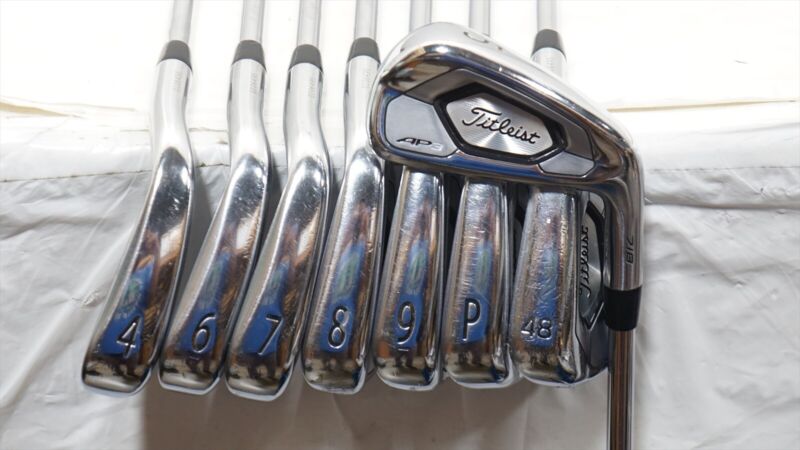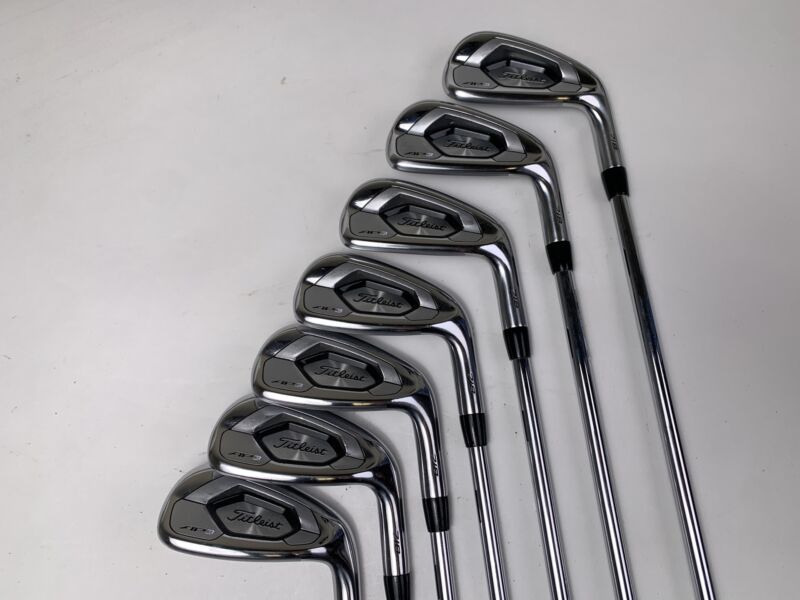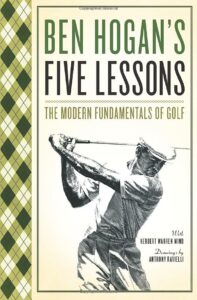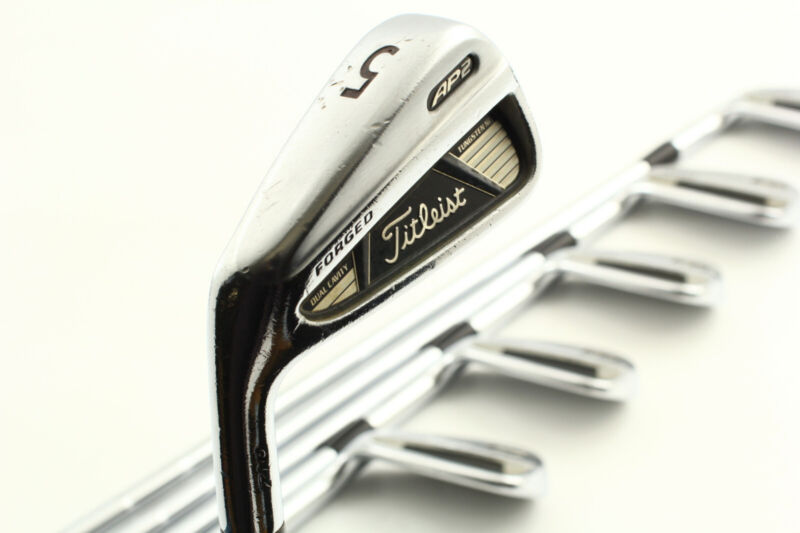Titleist AP1 vs AP3: A Comparative Analysis
Among the myriad of golf irons available in the market today, Titleist’s AP1 and AP3 irons have consistently held their own.
These irons, part of the renowned Titleist AP series, have been the cornerstone of many a golfer’s bag due to their advanced technology, design, and performance.
But how do they stack up against each other?
This article aims to present an in-depth comparison between the AP1 and AP3, shedding light on their design, performance, suitability, and overall value.
Titleist AP1 vs AP3: Which is Better?

AP1’s Design
Titleist’s AP1 irons are designed with the intent to merge game improvement technology with great looks and feel. The design is highlighted by a cast 431 stainless steel body, optimizing the balance between strength and flexibility.
Moreover, the high-density tungsten weighting strategically located in the heel and toe provides higher stability and improved off-center hit performance.
AP3’s Design
The AP3, on the other hand, is a different beast altogether. As a hybrid of AP1 and AP2, the AP3 strikes a balance between game improvement and players irons.
AP3 boasts of a hollow-blade construction with L-face inserts, so you can really launch high and farther.
The club has the sleek look of a tour iron and the high-speed performance of a distance iron, an appealing combination for many players.
AP1’s Performance
The performance characteristics of the AP1’s are skewed towards enhancing game improvement. They are well-regarded for their superior forgiveness, and their high-MOI design delivers speed on off-center hits.
The AP1’s are known for their ability to launch the ball high and long, with an emphasis on consistent speed and improved launch.
AP3’s Performance
The AP3, true to its hybrid nature, holds a perfect middle ground when it comes to performance. It provides players with a fast and forgiving iron built for serious speed.
The hollow-blade construction combined with a high-strength steel L-face insert helps to launch the ball long and high with shot-stopping spin – even on longer shots.
This increases distance and provides a more consistent gapping between irons.
AP1’s Feel and Sound
AP1 irons deliver a satisfying feel and crisp sound at impact, thanks to their progressive construction, which ranges from hollow-body long irons to undercut cavity mid and short irons.
The feel is a little firmer than some game-improvement clubs but softer than most players irons, making them quite versatile for a range of handicaps.
AP3’s Feel and Sound
While the AP3s come with a larger clubhead, their feel and sound don’t disappoint.
Thanks to Titleist’s innovative hollow-blade design paired with unsupported L-Face inserts, these clubs deliver the game’s most coveted feel.
This unique design not only promotes high ball speed and increases distance but also provides a surprisingly smooth and solid sensation at impact.
AP1’s Looks
In terms of looks, the AP1 does an impressive job of hiding its game-improvement credentials. These clubs have a modern, attractive look with a slightly thicker topline and more offset compared to some players irons.
The clubhead is also slightly larger, giving players more confidence at address without looking too clunky.
AP3’s Looks
Titleist AP3 irons have a more streamlined look than their AP1 counterparts, boasting a more traditional appearance that better players prefer.
Despite the sleeker design, the AP3 still packs plenty of forgiveness, thanks to the hollow-blade construction and high-density tungsten weighting.
These factors combine to make the AP3 a truly high-performing iron set that blends superior distance, forgiveness, and solid feel in a player-preferred shape.
Price: AP1 vs AP3
No golf equipment discussion would be complete without touching on price. The AP1s, as game-improvement irons, come with a more wallet-friendly price point compared to the AP3s.
The latter, with their enhanced performance and sleek looks, command a higher price. At the time of writing, the AP3 costs a whopping $300 more than the AP1.
However, the cost is well justified for players who seek a set that bridges the gap between game-improvement and players’ irons.
Workability and Versatility

The ability to shape shots and control trajectory is a feature usually reserved for the more skilled golfers among us. When it comes to these aspects, the AP1 and AP3 irons again diverge noticeably.
The AP1, given its game-improvement nature, emphasizes straight shots.
While skilled players could work them to some extent, the clubs’ high moment of inertia and low center of gravity are primarily designed to help players launch the ball higher and straighter.
Hence, they are less versatile when it comes to shot shaping.
On the other hand, the AP3 irons offer a balance of forgiveness and workability.
With their player’s iron profile, they offer a greater degree of control over the ball flight, enabling proficient players to draw, fade, punch or loft the ball as needed.
They provide the best of both worlds – a valuable trait for mid handicappers looking to elevate their game.
Final Assessment and Verdict
Choosing between the Titleist AP1 and AP3 irons can seem like a challenging endeavor, given their distinctive features and appeals.
Both sets are products of meticulous design and are reflective of Titleist’s commitment to aiding golfers at various skill levels.
It all comes down to your preference, ability, and what you seek to achieve in your golf game.
The AP1 irons, with their game-improvement design, are ideal for beginners and high-handicap golfers who need that extra bit of assistance to get the ball airborne and increase their consistency.
They are forgiveness personified, aimed at reducing the impact of off-center hits and improving launch conditions for players who struggle with these aspects.
If you’re a novice golfer or a high handicapper looking to hit more greens in regulation, the AP1 could be your ideal choice.
The AP3 irons, in contrast, are suitable for mid to low handicappers who desire the forgiveness of a game improvement iron coupled with the workability and feel of a player’s iron.
If you’re at that stage where you want to explore shot shaping or seek to improve your distance control, while not sacrificing too much on the forgiveness front, the AP3 should be high on your consideration list.
Related Posts:
- Why Are Scotty Cameron Putters So Expensive?
- KBS Tour 90 vs. 105: What Are The Differences?
- Tensei Orange vs White: Which is Better?

Want to Get Better at Golf?
Get "Ben Hogan's Five Lessons" and join thousands of others improving their golf skills.
Learn the Fundamentals: Stance and Posture > Golf Grip > The Swing.
This book has LOADS of positive reviews. THOUSANDS OF REVIEWS. A MILLION COPY SOLD. CHEAP!
Get the Book Here
